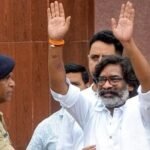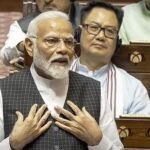A recent study conducted by D. Tripati Rao of the Indian Institute of Management (IIM), Lucknow, in collaboration with researchers from Birla Institute of Technology and Science, Pilani, and the Union Ministry of Agriculture and Farmers Welfare sheds light on the intricate dynamics of India’s labour market. Here’s a comprehensive overview of the key findings and policy prescriptions outlined in the study:
1. Stagnating Employment Growth and Jobless Growth:
The study highlights a concerning trend of stagnating employment growth rates, weakening employment elasticity, and slow structural transformation in India’s economy. From 1987–88 to 2004–05, there was a surge in output growth and employment, followed by a period of ‘jobless growth’ from 2004–05 to 2018–19. Although there has been a trifling rebound thereafter, significant challenges persist.
2. Need for Labour-Intensive Manufacturing Sector:
The researchers emphasize the importance of identifying and promoting the labour-intensive manufacturing sector to achieve inclusive growth. The agricultural sector, while employing a significant portion of the youth, contributes low value-added to the overall economy, exacerbating employment challenges.
3. Gender Disparity and Unemployment:
The study underscores significant gender disparities in the labour market, with a decline in the Labour Force Participation Rate (LFPR) higher for females compared to males from 1983 to 2020–21. The female Work Force Participation Rate (WFPR) remains alarmingly low, standing at 32.46% in 2020–21, highlighting the urgent need for gender-inclusive policies and initiatives.
4. Policy Interventions for Inclusive Growth:
Policy interventions aimed at uplifting various industries, particularly the manufacturing sector, are deemed essential to create high linkage effects and foster job creation. The quality and decency of jobs are emphasized, highlighting the importance of examining productivity and job standards alongside job numbers.
5. Shift Towards Self-Employment:
The study reveals that self-employment has been the chief driver of the Indian job market, with a significant portion of the labour force engaged in self-employment activities. However, challenges persist in ensuring the sustainability and quality of self-employment opportunities.
In conclusion, the findings of the study underscore the urgent need for comprehensive reforms and targeted interventions to address the multifaceted challenges facing India’s labour market. By prioritizing inclusive growth, promoting labour-intensive sectors, and addressing gender disparities, policymakers can pave the way for a more equitable and resilient economy. As India navigates the complexities of its evolving labour landscape, collaborative efforts between academia, government, and industry are crucial in fostering sustainable development and prosperity for all.









